What is Timing a Muzzle Brake? (Explained)
There are many different muzzle devices on the market today. Some of the most common are flash hiders, compensators, and muzzle brakes, although there are a few others.
Most of these devices do exactly what you would expect them to do: reduce flash, improve recoil management and reduce muzzle rise.
One of the most confusing things about muzzle devices is that not all devices need to be timed when installed.
The reason for this is because some devices don’t rely on timing for their effectiveness.
Timing a muzzle brake refers to the act of making sure that all of the ports on the device are aligned properly so that they can direct the blast in a desired direction. In order to do this, you will typically use shims.
The majority of muzzle devices rely on timing for their functionality. The reason is because timing helps to redirect and harness the blast from the muzzle device so that it is directed in a certain way and has maximum effectiveness.
What is self timing muzzle brake?
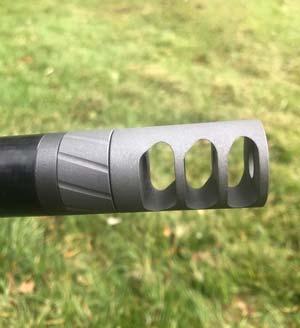
When you see a muzzle brake that is described as self-timed, it typically means that it doesn’t require any additional work to get it to work correctly.
If you are using shims with these types of muzzle brakes, make sure that you put them above the threads on your barrel.
What is timing a muzzle brake?
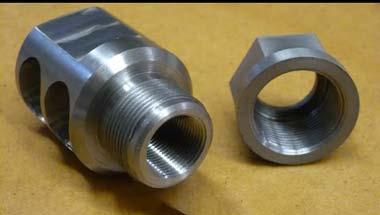
A muzzle brake is a device that attaches to the muzzle of a firearm. Once properly timed, or positioned, the muzzle brake redirects gases exiting the end of the barrel.
The redirected gasses help protect the shooter from felt recoil and also help reduce both flash and sound signature.
Also known as recoil compensators or simply compensators, muzzle brakes can be used on any rifle or pistol with a threaded barrel.
They are most commonly found on tactical rifles such as those used by police or military personnel.
When you screw a muzzle brake onto a threaded barrel, the brake might not align properly for those ports to be horizontal.
In order to make them line up correctly, you must use shims to time the device.
This is called “timing” the muzzle brake. Most manufacturers will include shims with their brakes for this purpose.
A muzzle brake is a device attached to the end of a rifle barrel that reduces recoil. The design is not as simple as it might seem.
You don’t want the muzzle brake to protrude from the end of the barrel so far that it interferes with your shooting, but you also don’t want it too short.
If you’re only having one rifle built, you can simply try different lengths and see which one works best.
But if you’re building more than one, you’ll need to time the muzzle brake so it’s properly aligned to the barrel.
How do you time a muzzle brake?
When you screw a muzzle brake onto a threaded barrel, the brake might not align properly for those ports to be horizontal.
In order to make them line up correctly, you must use shims to time the device.
What are shims?
Shims are small pieces of metal or plastic used in construction work and machine repair to adjust parts so they fit together properly.
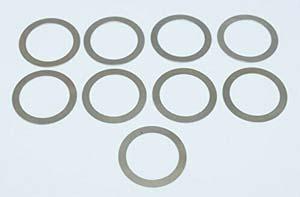
You can buy pre-made shims from shops that sell gun parts or make them yourself from cardboard or plastic sheeting.
When buying shims, purchase extra in case you damage some during installation or removal.
Muzzle brake
A muzzle brake is a device attached to the end of a firearm’s muzzle (the end of the barrel from which the bullet exits) that redirects propellant gases to counter recoil and unwanted rising of the barrel during firing.
Muzzle brakes are often used by civilian shooters, as well as in military applications, to reduce or eliminate muzzle rise and recoil.
A good quality muzzle brake should be timed correctly for accurate shooting. Before you can time your muzzle brake, you must know how to determine if it is self-timed or not.
A self-timed muzzle brake has an adjustable gas port that will allow you to adjust the timing of your muzzle brake.
If the port is not adjustable then you must time the device using shims.
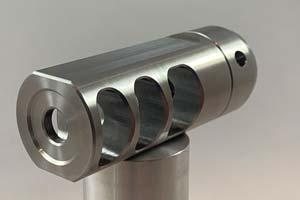
If your muzzle brake has an adjustable gas port then you have the option of using shims or timing your own muzzle brake.
You may choose to use shims if you do not know how to properly time a muzzle brake for your firearm.
The best way to time a muzzle brake is by using a caliper and measuring the amount of gap between each baffle stack.
To do this, unscrew your suppressor from the threaded end of your threaded barrel until you can see each baffle stack on both sides of the thread.
To time a muzzle brake, you will need to make sure that the brake lines up properly with the barrel.
The muzzle brake is threaded onto the barrel and then fixed in place with shims.
This is necessary because some muzzle brakes are not made perfectly flat, so they must be aligned using shims.
To line up a muzzle brake, turn it in a clockwise direction until it comes to a stop. Then, place a straight edge on the front of the muzzle brake.
Check the straight edge from the side on both sides of the barrel. If the straight edge lines up perfectly, then the muzzle brake has been timed correctly.
If there is still an error in alignment when checking with a straight edge, try adding more shims.
Self-timing muzzle brakes are already built with high precision and are designed to time themselves as you screw them into place on a threaded barrel.
In these cases, you do not need to use any shims at all to align them correctly because they can self-align correctly as you screw them onto your barrel.
It may still be helpful to test whether the muzzle brake is lined up correctly using shims if you have attached any accessories to your firearm such as suppressors or flash hiders before installing your new muzzle brake device.
Advantages and Do muzzle brakes do anything?
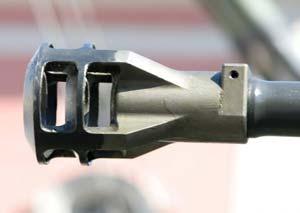
A muzzle brake is a device that reduces recoil and muzzle climb when a firearm is fired.
The way it works is simple: Gases produced by the burning propellant in the cartridge expand at nearly twice the speed of sound.
These gases also push a gun’s barrel rearward while they are exiting. A muzzle brake redirects this force parallel to – but slightly forward of – the muzzle.
This redirecting force, coupled with the direct recoil from the burning gunpowder, cancels out most of the rearward push of the gases and minimizes the overall movement of the firearm.
Do you need to time a suppressor?
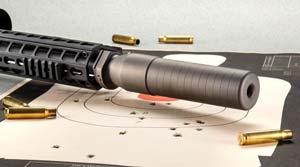
Suppressors reduce noise by slowing down and cooling gasses as they exit the barrel, both before and after combustion.
When you fire a gun without a suppressor, hot gas travels through the barrel in two separate phases: First, during firing, gas produced by combustion exits at extremely high speed and low pressure;
Second, after firing, unburned powder exits at much lower speeds and much higher pressures due to back pressure created by recoil.
In either phase, gas travels through an expansion chamber in which it transitions from high speed and high pressure to low speed and low pressure.
A silencer slows down these fast-moving gases using several methods to reduce both noise and felt recoil.
